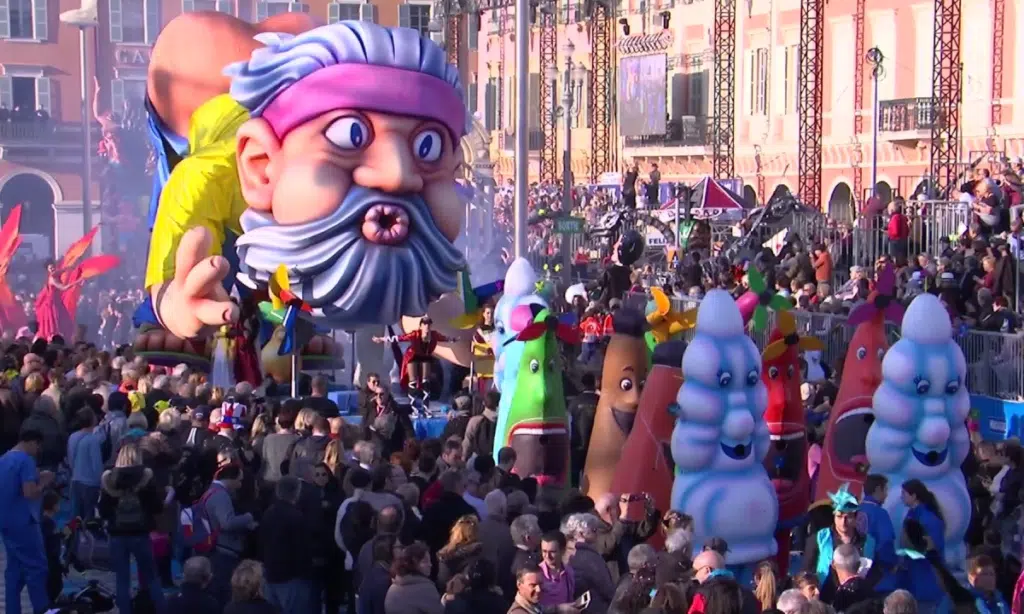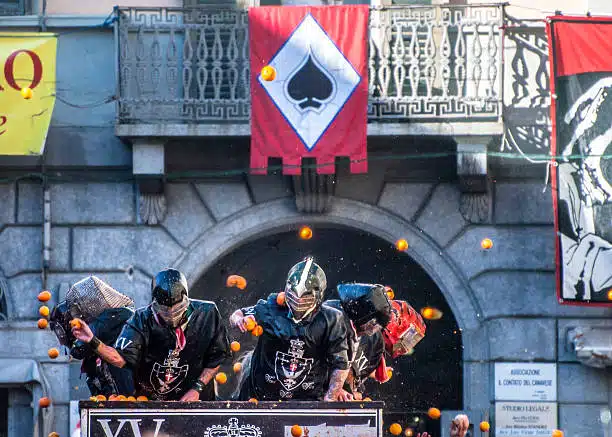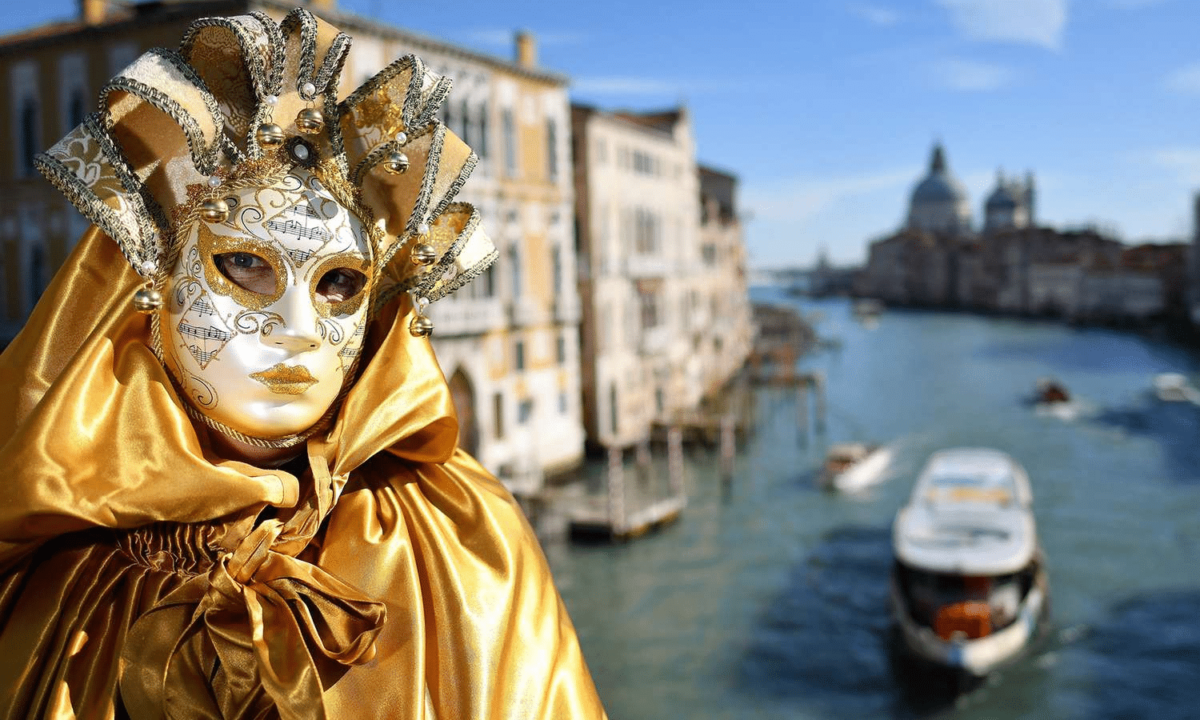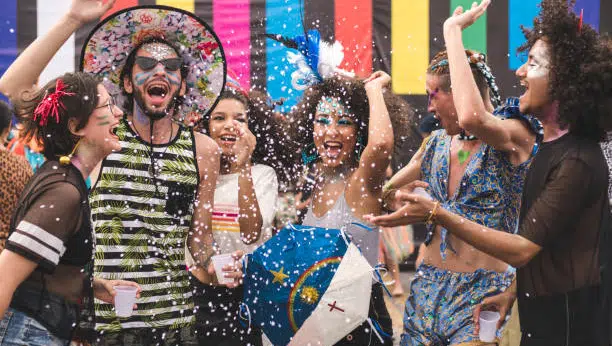Why should you visit the Carnival in Nice? Because more than 1 million people will see this beautiful city for the annual carnival festivities. More impressively, it is one of the top 3 carnivals in Europe.

©iconicriviera.com
Our website includes affiliate links. So, remember that we may receive commissions when you click our links and make purchases. Please read our legal disclaimer document for more information about our Affiliate disclaimer and other disclaimers like the Fair-Use disclaimer.
About the Carnival in Nice
The Carnival dates back to 1294 and was modernized in 1873 with processions of floats, images, and paying stands directed by Alexis Mossa. The Flower parades were created in 1876 and became a showcase for local production. Street arts have become a hallmark of the new Carnival, replacing the 500 giant heads that used to accompany the Carnival floats. Carnival was canceled during the First and Second World Wars in 1991 due to the Gulf War. Since 2005, the theme of the Flower parades has followed that of the parades.
The King and his Court
The inventors of His Carnival Majesty and his Court are two great artists from Nice, Alexis Mossa and his son Gustav-Adolf Mossa, in turn, or together “Ymagiers du Roy.”
The Royal Family
The Carnival starts with the King of the festivities taking the keys to the city. He leads the procession and is seated on a throne at Place Masséna. The King’s float is about 15 meters high, followed by the Queen’s. Carnavalon is the prince and child of the King and Queen.
The Court
The Nice Carnival features floats and giant heads. The floats represent a specific subject based on the year’s theme and reach up to 12 meters tall. Caricatures of politicians are popular on these floats. The giant heads follow the floats and entertain the crowd. They are 2.5 meters tall and depict characters based on the Carnival’s theme. The vast heads can represent anyone, including celebrities, politicians, and locals.
Carnival animals
We will focus only on the most significant animal masks. Firstly, the eagle is an essential symbol in the Carnival and is the mascot of the local football team. The dragon Babau is a universal symbol. It is 32 meters tall and pushed by 18 men. The Ratapignata is another symbol in the Carnival and represents the empress of the world of Darkness. The Cat Raminagrobis was once celebrated as His Carnival Majesty. The Carnival also features troupes from all over the globe who parade alongside the floats and bring their energy, culture, and imagination to the event.
Prominent guest troupes
King Triboulet
In 1888, the Emperor of Brazil, Pedro Il, attended two flower parades and paraded in a flower carriage with his family.
In 2009, to mark the year of France in Brazil, the Samba School of Grande Rio paid tribute to the Carnival on the Triboulet float.
International troupes
The Nice Carnival hosts troupes from Hungary, Belgium, Colombia, and China. Each troupe showcases their traditional costume during the parade. The samba dancers from Brazil are also present at the Carnival. Additionally, Italian troupes exhibit the carnival art of flag-throwing that dates back to the Middle Ages. These exercises are both tricky and breathtaking and require mastery and passion.
Opening and closing Carnival ceremony
Nice Carnival is a colorful event lasting 15 days, featuring actors, carnival floats, flowers, musical troupes, dancers, and foreign guests. It culminates with the burning of the King, symbolizing the end of winter and the arrival of spring. The next edition’s theme will be unveiled after a new king is reborn from the ashes.
Carnival Parade
The Carnival is a world-famous event that features large floats, giant automatons, animated elements, street art troupes, costumed groups, and music from around the world. It takes place on Place Masséna and around the Albert 1er garden. The Nice is considered the world’s third most significant Carnival, after Rio de Janeiro and Venice. The public can admire the King and Queen, their subjects, extravagant floats, and giant head parades yearly. The Carnival floats ignite the hearts of spectators.
The Flower Battle
The Flowers parade
Costumed actresses parade on flower-decorated floats yearly, showering the public with flowers. The Flower Parade originated in 1876 on the Promenade des Anglais to entertain tourists. Still, it quickly became a way to honor local producers. Since 2005, the theme of the Flower Parades has matched that of the carnival parades. Today, 80% of the flowers used are produced locally. Florists pick fresh flowers from the Halle Spada area for 72 hours before each event, distributing 250,000 stems of flowers and 21 tonnes of mimosas to the public.
Queernaval in Nice
Lou Queernaval is the first gay carnival in France and takes place on the Friday during the second week of Nice’ Carnival, one of the world’s most significant carnival events. Please read our article about the Nice gay carnival if you want to know more.
The conclusion
So, are you a fan of costumes? We certainly are. In the end, please share with us what your favorite events were at the carnival.
Take a look at
References and sources:
Photo credits:
Featured photo: @iconicriviera.com




Comments are closed.